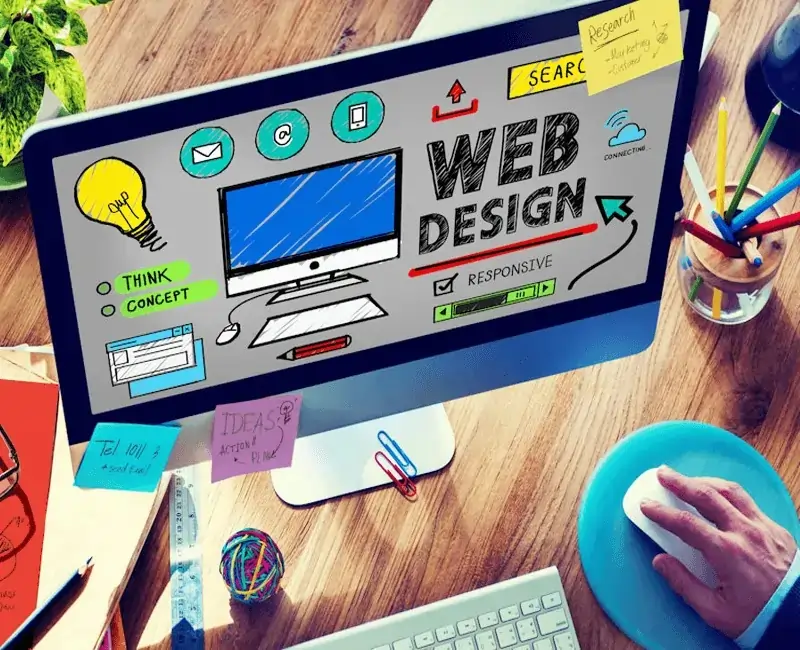Typography is the art and science of arranging type to make written language legible, readable, and appealing when displayed. In web design, typography is more than just selecting fonts, it’s about crafting an immersive digital experience. Let’s delve into the intricate world of typography in web design and explore how to leverage fonts to enhance user engagement.
Table of Contents
Key Points
Typography’s Impact: Typography in web design isn’t just about selecting fonts; it’s about crafting a blend of aesthetics and functionality that shapes the user’s experience and conveys the brand’s personality and emotions.
Readability Essentials: Prioritize readability by ensuring optimal font size, line spacing, and high contrast between text and background. Consistency in typography across the website maintains a professional look and aids navigation.
Font Pairing and Emotional Impact: Pair fonts strategically to create contrast and evoke emotions. Playful fonts can convey a fun vibe, while formal fonts establish professionalism. Tools like Google Fonts offer combinations for preview and testing.
Mobile Responsiveness: Ensure typography remains effective on mobile devices by using responsive fonts that adapt to different screen sizes. CSS techniques like viewport units help scale fonts appropriately for various devices.
Recommendations and Tips: Prioritize readability over aesthetics, test fonts on multiple devices, consider web-safe fonts for consistent rendering, experiment with pairings while maintaining consistency, keep accessibility in mind, stay updated on trends, optimize load times, customize fonts for branding, and seek user feedback for improvement.
Understanding the Power of Typography
Typography goes beyond mere text, it’s a design element that influences user perception and interaction. The choice of fonts can convey a brand’s personality, evoke emotions, and guide users through content. Serif and Sans-Serif fonts are two primary categories, each with its own tone and style. Selecting the right font depends on the website’s purpose and target audience.
Prioritizing Readability
Readability is paramount in web design. No matter how visually appealing a font may be, if users struggle to read the content, it fails its purpose. Factors such as font size, line spacing, and contrast play crucial roles in ensuring optimal readability. Following established web design standards and accessibility guidelines is essential to make content accessible to all users.
Maintaining Consistency
Consistency in typography across a website fosters a cohesive and professional look. Establishing a hierarchy of headings and subheadings helps users navigate content seamlessly. Font pairing, combining fonts that complement each other, enhances visual appeal while maintaining readability.
Emotional Impact of Fonts
Fonts have the power to evoke emotions and convey a website’s personality. Playful fonts inject a sense of fun and creativity, suitable for certain industries or target demographics. Formal fonts, on the other hand, exude professionalism and reliability, making them ideal for corporate websites.
Ensuring Mobile Responsiveness
In today’s mobile-centric world, ensuring typography remains effective across different devices is crucial. Responsive fonts that adapt to various screen sizes maintain readability and user experience. Implementing fluid typography techniques with CSS ensures seamless font scaling on different devices.
Adapting to Typography Trends
Web design trends in typography evolve over time, offering opportunities for innovation and creativity. Variable fonts and custom typefaces are modern trends that provide flexibility and uniqueness to designs. However, it’s essential to balance trendiness with timeless appeal to maintain a website’s relevance.
Practical Recommendations and Tips
Prioritizing readability, testing fonts across devices, using web-safe fonts, experimenting with font pairings, and staying updated with accessibility guidelines are practical tips for effective typography in web design. Customizing fonts for branding and seeking user feedback further enhance the design process.
Conclusion
Mastering typography in web design requires a deep understanding of its principles and practices. By leveraging fonts effectively, designers can create visually stunning and engaging websites that captivate users and convey meaningful messages.
Read More Articles
- Exploring Typography Trends for Digital Design in 2024
- Unlocking Sustainable Economic Growth Through Innovation
- Navigating the Financial Landscape of Executive Education and MBA Programs
- Understanding Information Technology: The Backbone of Modern Business
- Understanding Algorithms: Definition, Functionality, and Real-Life Applications
- Understanding Machine Learning: A Comprehensive Exploration
- Unlocking the Power of Machine Vision: Revolutionizing Industries
- Unlocking the Power of Expert Systems: Enhancing Decision-Making with AI
- Unlocking the Power of Natural Language Processing
- Unlocking the Secrets of Artificial Intelligence
- Optimizing Logistics with AI: Revolutionizing Efficiency in Package Routing


